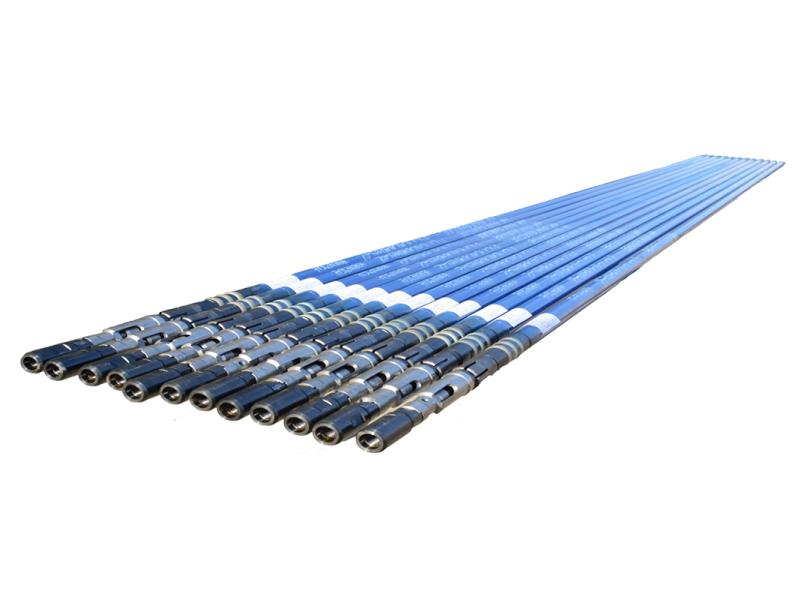A sucker rod pump is a type of downhole equipment that, driven by a pumping unit, lifts crude oil from a wellbore to the surface.
Commonly Used Sucker Rod Pump Categories Internationally:
A tubing pump, also known as a tubing pump, is unique in that the outer barrel, sleeve, and suction valve are pre-assembled on the surface and connected to the lower portion of the tubing before being lowered into the wellbore. A piston equipped with a discharge valve is then fed into the pump via the sucker rod and tubing. Tubular pumps can be further divided into sleeve pumps and solid-barrel pumps.
The barrel of a sleeve pump is constructed from multiple sections of material and lined within the outer barrel, while the barrel of a solid-barrel pump is machined entirely from seamless steel pipe. This pump offers approximately 20% higher volumetric efficiency than a sleeve pump, extending the life of the plunger pump barrel assembly and saving approximately 40% of high-quality steel. Unfortunately, sleeve pumps are now rarely used in China.
The piston, a key component of a sucker rod pump, is a hollow cylinder made from seamless steel tubing. Its outer surface is smooth and features annular grooves. These grooves are designed to trap sand particles that enter the gap between the piston and the bushing, reducing wear on the piston and the pump barrel. The oil in the grooves also lubricates the piston surface.
During pump inspections, a retrievable suction valve (a fixed valve) can be used to relieve pressure in the tubing. By lowering the rod string, the catch at the piston's lower end engages the valve's retrievable head, lifting the valve out. However, this design increases the pump's surge relief distance and clearance volume, making it susceptible to gas flow and reducing pumping efficiency. Currently, most wells using tubing pumps have an oil bleeder installed at the bottom of the tubing to relieve pressure.

For large wells, the piston's diameter exceeds the tubing's inner diameter, making it impossible to lower the piston through the tubing. In these cases, the piston is typically lowered into the well along the tubing, followed by the sucker rod, where it connects to the piston in the pump using a device called a disconnector. Tube pumps are known for their simple structure, low cost, and the ability to run a larger pump diameter for the same tubing diameter, resulting in a larger displacement capacity. However, the need to pull the tubing during pump inspection increases workaround workload, making them more suitable for wells with shallower run-in depths and higher production rates.
On the other hand, sucker rod pumps, also known as insertion pumps, feature a design with two inner and outer mandrels. The outer mandrel is equipped with a cone seat and retaining ring at its upper end, the position of which determines the run-in depth. During pump inspection, maintenance can be performed by simply removing the inner mandrel from the sucker rod, making it easy to operate and reducing workaround workload. However, sucker rod pumps have a relatively low displacement capacity for the same tubing diameter.
During pump inspection, sucker rod pumps offer a unique advantage: no tubing needs to be pulled out; the inner mandrel can be easily removed using the sucker rod for maintenance, greatly facilitating operation and reducing workaround workload. However, compared to the simple structure and low cost of tube pumps, rod pumps are more complex and relatively expensive to manufacture. Given the same tubing diameter, rod pumps allow for smaller run-in diameters than tube pumps, making them more suitable for deeper run-in depths and lower-yield wells.
Furthermore, the metal pistons and plungers in conventional sucker rod pumps present challenges such as difficult machining, cumbersome manufacturing processes, and high wear.

